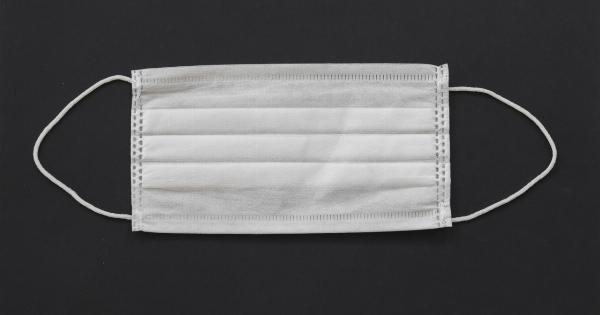Pharyngitis and laryngitis are both common throat infections that can cause discomfort and pain. While they share similarities, they have distinct differences in symptoms and treatments.
Understanding these differences can help you identify which condition you may have and seek appropriate medical treatment.
What is Pharyngitis?
Pharyngitis refers to the inflammation of the pharynx, which is the muscular tube that connects the back of your throat to your esophagus. It is commonly caused by a viral or bacterial infection, such as the common cold or strep throat.
The main symptoms of pharyngitis include:.
- Sore throat
- Difficulty swallowing
- Redness and swelling in the throat
- Tonsillitis
- Headache
- Fever
- Cough
What is Laryngitis?
Laryngitis, on the other hand, is the inflammation of the larynx, which is commonly known as the voice box. It can be caused by overuse of the voice, viral infections, or irritants such as smoke or excessive throat clearing.
The main symptoms of laryngitis include:.
- Hoarseness or loss of voice
- Tickling sensation in the throat
- Mild sore throat
- Dry cough
- Difficulty speaking
How to Differentiate Between Pharyngitis and Laryngitis?
While pharyngitis and laryngitis both involve throat inflammation, there are some specific signs that can help you differentiate between the two. Pay attention to the following:.
1. Location of Symptoms:
Pharyngitis primarily affects the back of the throat, including the tonsils, while laryngitis mainly affects the larynx or voice box.
2. Voice Changes:
Laryngitis often results in hoarseness or complete loss of voice, while pharyngitis typically does not cause significant voice changes.
3. Breathing Difficulty:
Pharyngitis usually does not cause breathing difficulties, but severe cases can lead to airway obstruction. Laryngitis, however, can cause breathing problems due to the swelling and inflammation of the larynx.
4. Coughing:
Pharyngitis commonly presents with a productive or nonproductive cough, while laryngitis is characterized by a dry cough.
5. Duration of Symptoms:
Pharyngitis symptoms typically subside within a week, but laryngitis can last for several weeks if it is not properly managed or given enough rest.
Treatments for Pharyngitis
Pharyngitis caused by a viral infection does not require specific treatment and usually resolves on its own within a week. However, there are some measures you can take to alleviate symptoms and promote faster recovery:.
- Rest your voice by speaking less, avoiding whispering, and not clearing your throat excessively.
- Stay hydrated by drinking plenty of fluids, such as water, warm tea with honey, or soothing throat lozenges.
- Gargle with saltwater to soothe the throat. Dissolve half a teaspoon of salt in warm water and gargle several times a day.
- Over-the-counter pain relievers and throat sprays may help relieve pain and reduce inflammation.
- If your pharyngitis is caused by a bacterial infection, your doctor may prescribe antibiotics to treat it.
Treatments for Laryngitis
Laryngitis often requires rest and self-care measures to allow the vocal cords to heal. Here are some tips to manage laryngitis:.
- Avoid speaking or singing loudly and try to speak in a gentle tone.
- Limit exposure to irritants such as smoke, dust, or chemicals that can aggravate the inflamed larynx.
- Stay hydrated by drinking plenty of fluids to keep the vocal cords lubricated. Avoid caffeine and alcohol as they can dehydrate the body.
- Avoid throat clearing, coughing, and whispering, as they put extra strain on the vocal cords.
- Use a humidifier or inhale steam to moisten the throat and reduce irritation.
- If symptoms persist or worsen, it is advisable to consult a doctor. In some cases, speech therapy or further medical intervention may be necessary.
When to Seek Medical Attention?
While most cases of pharyngitis and laryngitis can be managed at home, some situations require medical attention:.
- If symptoms persist for more than a week despite self-care measures.
- If you experience significant difficulty breathing.
- If you have a high fever (above 101°F or 38.3°C).
- If you have a severe sore throat that makes swallowing or speaking extremely painful.
- If you suspect your symptoms may be caused by a bacterial infection, such as strep throat.
- If you have recurrent or chronic laryngitis.
Conclusion
While pharyngitis and laryngitis are both throat infections that can be uncomfortable, it is important to differentiate between the two in order to receive appropriate treatment.
Pharyngitis primarily affects the back of the throat, while laryngitis affects the voice box. Pharyngitis symptoms include sore throat, difficulty swallowing, and tonsillitis, while laryngitis leads to hoarseness or loss of voice.
There are various self-care measures for managing pharyngitis and laryngitis, such as rest, staying hydrated, and avoiding irritants. If symptoms persist or worsen, it is advisable to seek medical attention to ensure proper diagnosis and treatment.



























